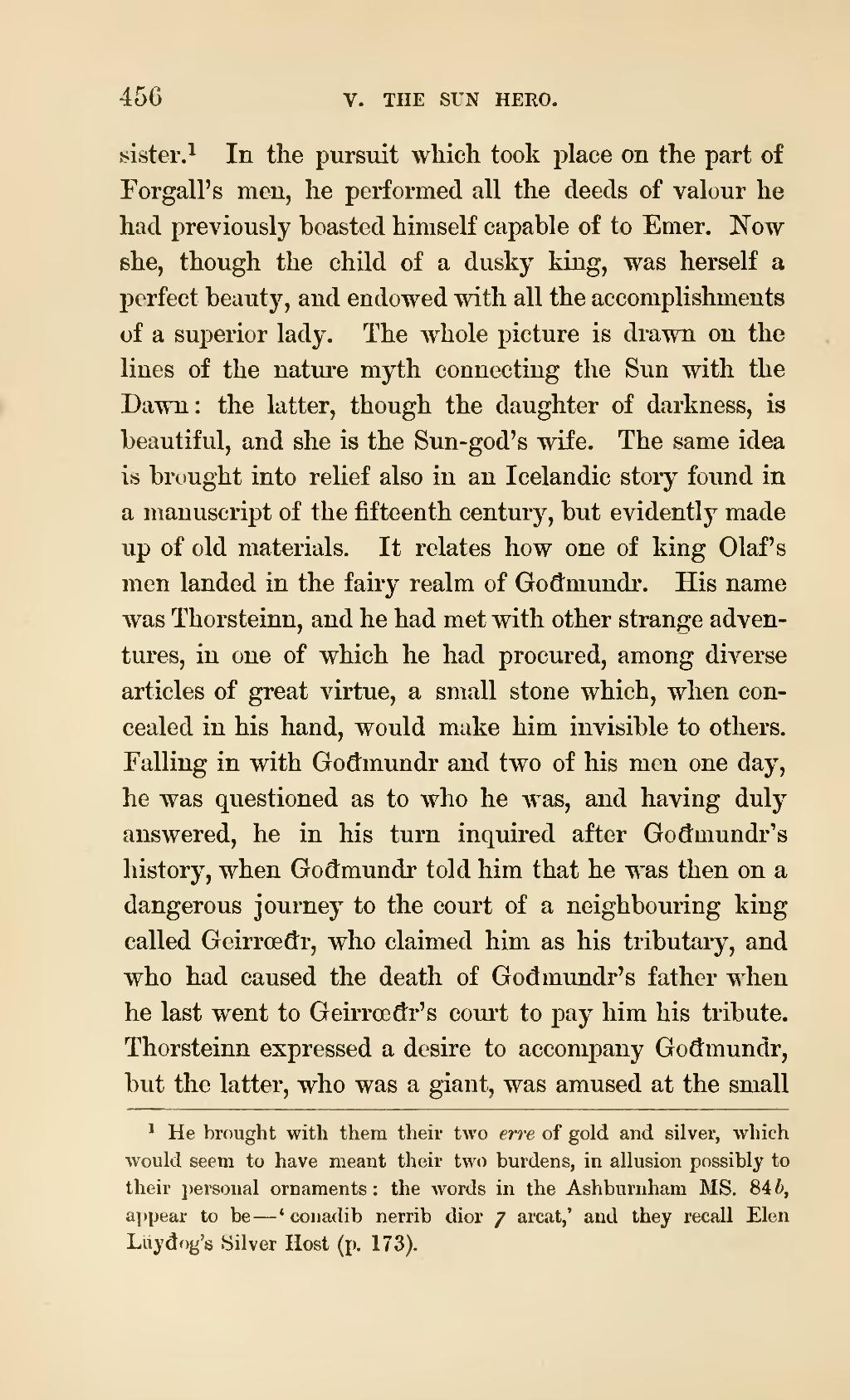sister.[1] In the pursuit which took place on the part of Forgall's men, he performed all the deeds of valour he had previously boasted himself capable of to Emer. Now she, though the child of a dusky king, was herself a perfect beauty, and endowed with all the accomplishments of a superior lady. The whole picture is drawn on the lines of the nature myth connecting the Sun with the Dawn: the latter, though the daughter of darkness, is beautiful, and she is the Sun-god's wife. The same idea is brought into relief also in an Icelandic story found in a manuscript of the fifteenth century, but evidently made up of old materials. It relates how one of king Olaf's men landed in the fairy realm of Goᵭmundr. His name was Thorsteinn, and he had met with other strange adventures, in one of which he had procured, among diverse articles of great virtue, a small stone which, when concealed in his hand, would make him invisible to others. Falling in with Goᵭmundr and two of his men one day, he was questioned as to who he was, and having duly answered, he in his turn inquired after Goᵭmundr's history, when Goᵭmundr told him that he was then on a dangerous journey to the court of a neighbouring king called Geirrœᵭr, who claimed him as his tributary, and who had caused the death of Goᵭmundr's father when he last went to Geirrœᵭr's court to pay him his tribute. Thorsteinn expressed a desire to accompany Goᵭmundr, but the latter, who was a giant, was amused at the small
- ↑ He brought with them their two erre of gold and silver, which would seem to have meant their two burdens, in allusion possibly to their personal ornaments: the words in the Ashburnham MS. 84b, appear to be—'conadib nerrib dior ⁊ arcat,' and they recall Elen Lüyᵭog's Silver Host (p. 173).
